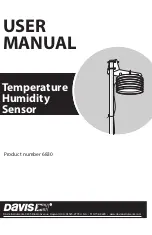
6.2.3 IEEE-488.2 Command Structure
95
|
www.lakeshore.com
D
SPE (Serial Poll Enable) and SPD (Serial Poll Disable): serial polling accesses the
Service Request Status Byte Register. This status register contains important
operational information from the unit requesting service. The SPD command
ends the polling sequence.
6.2.3.2 Common Commands
Common commands are addressed commands that create commonality between
instruments on the bus. All instruments that comply with the IEEE-488 standard
share these commands and their format. Common commands all begin with an aster-
isk. They generally relate to bus and instrument status and identification. Common
query commands end with a question mark (?). Model 336 common commands are
detailed in section 6.6.1 and summarized in TABLE 6-6.
6.2.3.3 Device Specific Commands
Device specific commands are addressed commands. The Model 336 supports a vari-
ety of device specific commands to program instruments remotely from a digital
computer and to transfer measurements to the computer. Most device specific com-
mands also work if performed from the front panel. Model 336 device specific com-
mands are detailed in section 6.6.1 and summarized in TABLE 6-6.
6.2.3.4 Message Strings
A message string is a group of characters assembled to perform an interface function.
There are three types of message strings: commands, queries and responses. The
computer issues command and query strings through user programs, and the instru-
ment issues responses. Two or more command strings or queries can be chained
together in one communication, but they must be separated by a semi-colon (;). The
total communication string must not exceed 255 characters in length.
A command string is issued by the computer and instructs the instrument to perform
a function or change a parameter setting. When a command is issued, the computer
is acting as talker and the instrument as listener. The format is:
<command mnemonic><space><parameter data><terminator>.
Command mnemonics and parameter data necessary for each one is described in
section 6.6.1. A terminator must be sent with every message string.
A query string is issued by the computer and instructs the instrument which response
to send. Queries are issued similar to commands with the computer acting as talker
and the instrument as listener. The query format is:
<query mnemonic><?><space><parameter data><terminator>.
Query mnemonics are often the same as commands with the addition of a question
mark. Parameter data is often unnecessary when sending queries. Query mnemonics
and parameter data if necessary is described in section 6.6.1. A terminator must be
sent with every message string. Issuing a query does not initiate a response from the
instrument.
A response string is sent by the instrument only when it is addressed as a talker and
the computer becomes the listener. The instrument will respond only to the last query
it receives. The response can be a reading value, status report or the present value of a
parameter. Response data formats are listed along with the associated queries
in section 6.6.1.
Содержание 336
Страница 4: ...Model 336 Temperature Controller...
Страница 6: ...Model 336 Temperature Controller...
Страница 26: ...14 cHAPTER 1 Introduction Model 336 Temperature Controller...
Страница 54: ...42 cHAPTER 3 Installation Model 336 Temperature Controller...
Страница 84: ...72 cHAPTER 4 Operation Model 336 Temperature Controller...
Страница 104: ...92 cHAPTER 5 Advanced Operation Model 336 Temperature Controller...
Страница 164: ...152 cHAPTER 7 Options and Accessories Model 336 Temperature Controller...
Страница 178: ...166 cHAPTER 8 Service Model 336 Temperature Controller...
















































